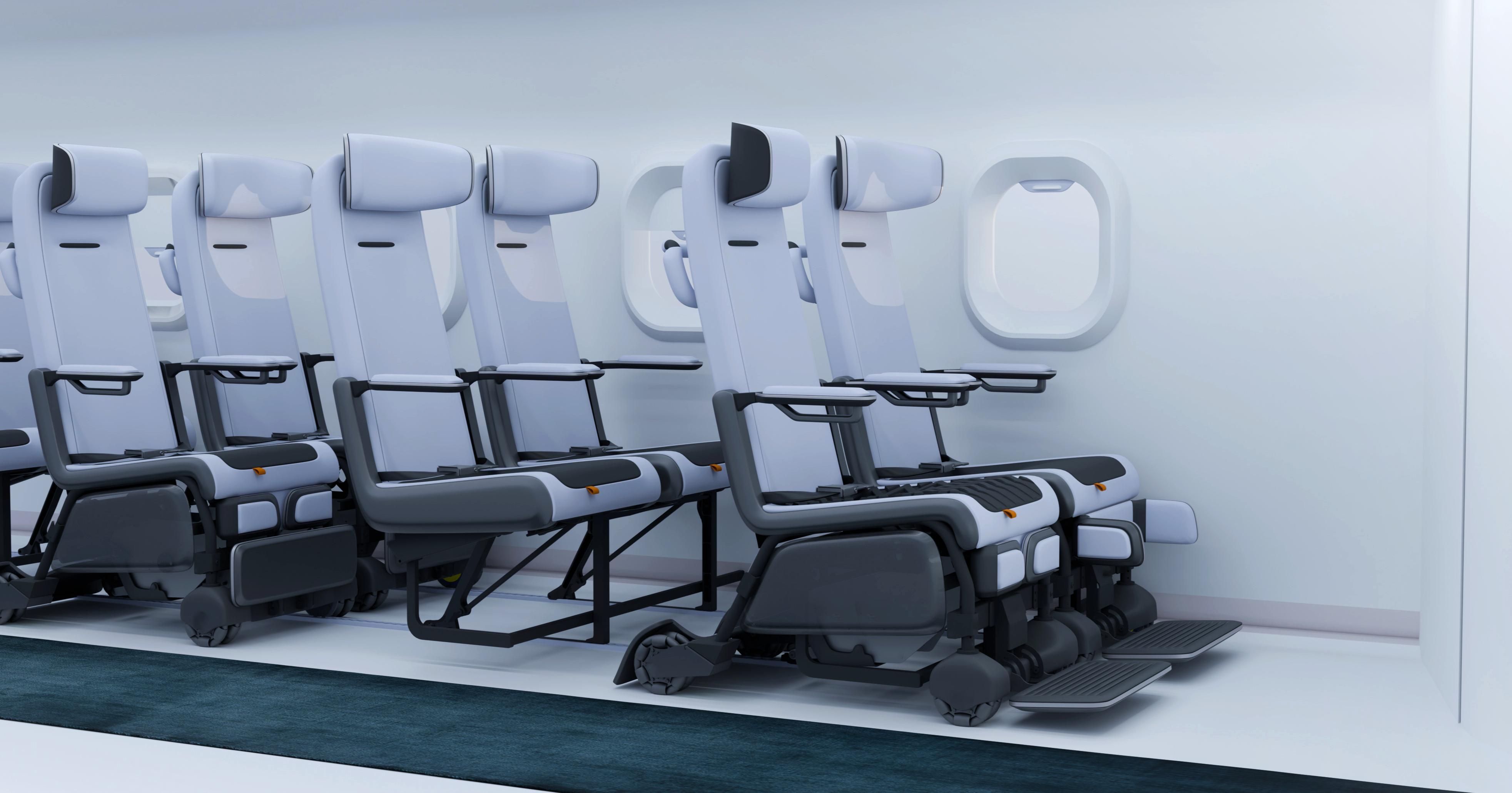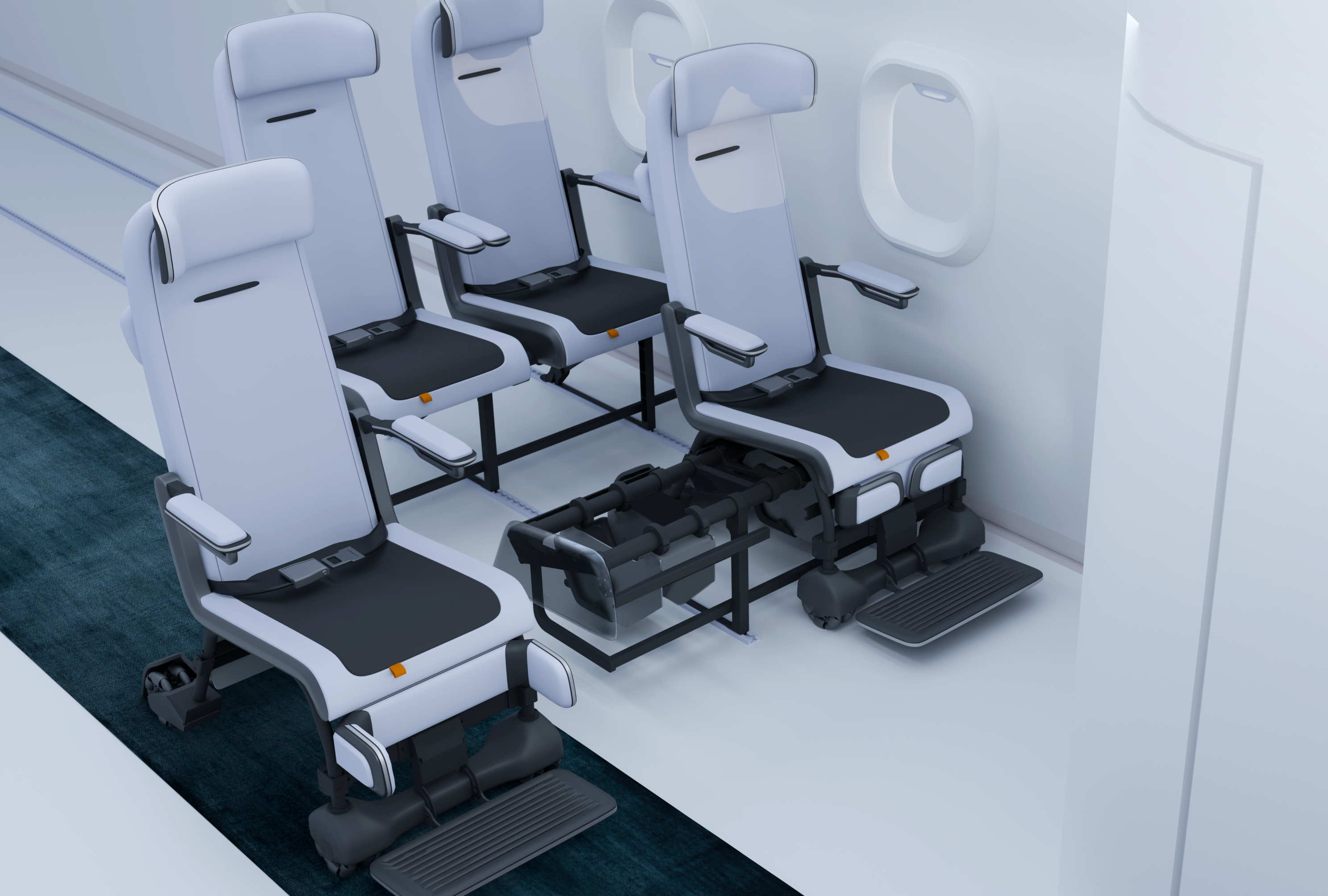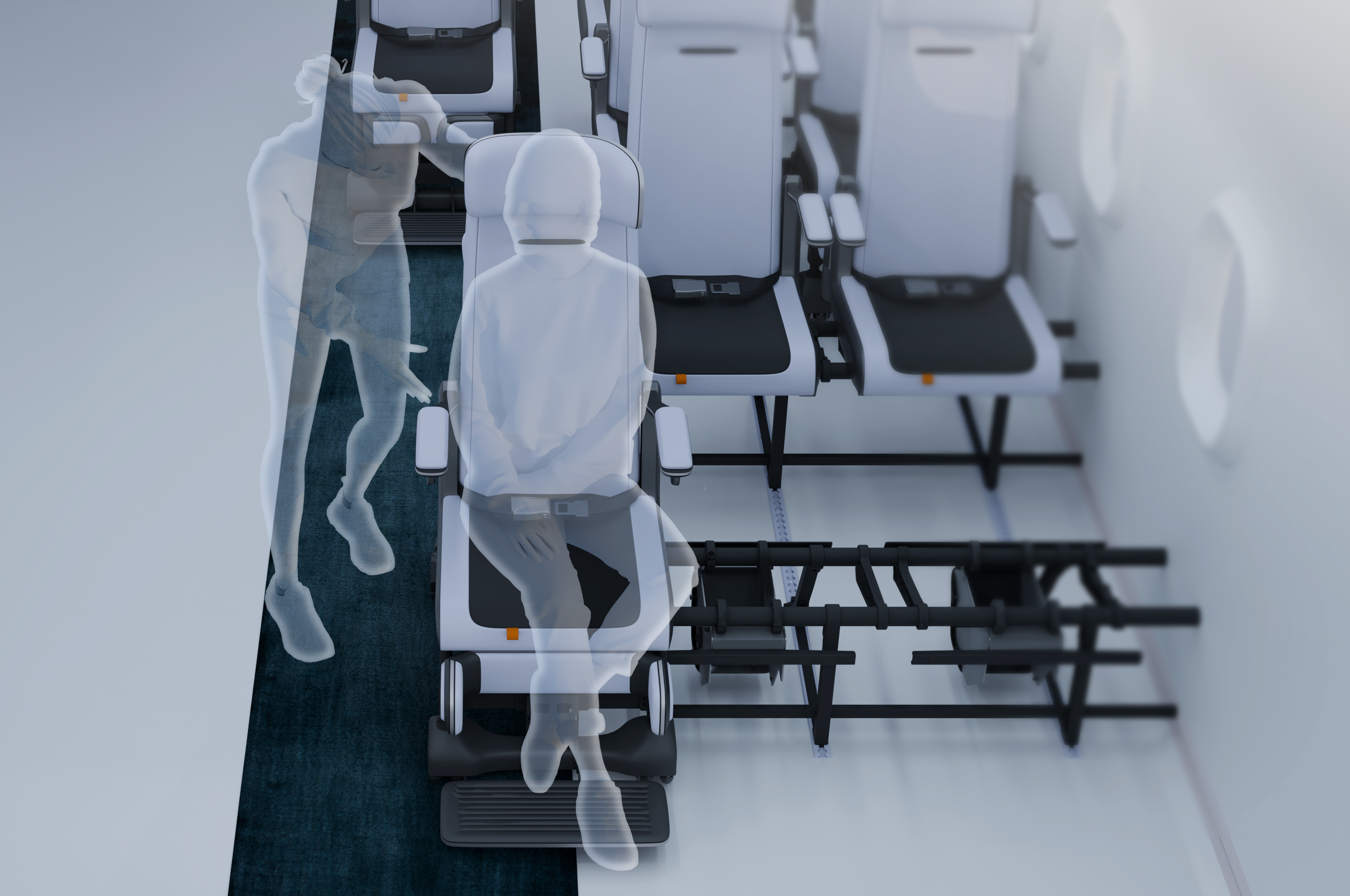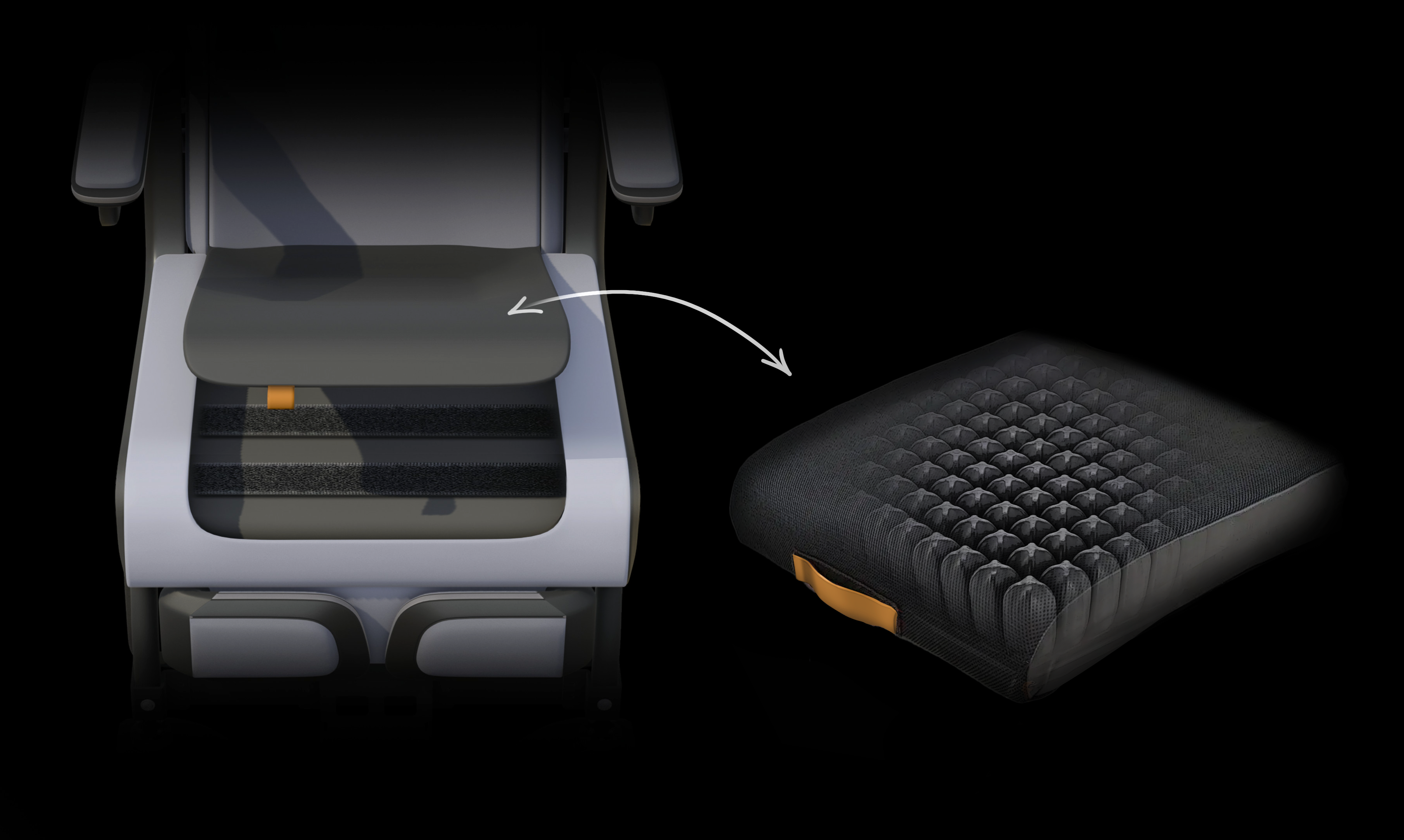Research & Development
JAXA promotes three research and development programs and a fundamental research program that underpins them.
Universal Design for Advancing All People’s Comfort in Air Travel
- Oct 8, 2025
- Exhibit of the “WellVoyage Seat” Mockup
Proposal for a Detachable Aircraft Seat to Improve Accessibility for Passengers with Reduced Mobility
JAXA and Toyota Boshoku Corporation have proposed the “WellVoyage Seat”, a detachable aircraft seat concept designed to eliminate the physical burden of transferring to and from a seat in a confined cabin space, which has long been a problem faced by passengers with reduced mobility and their caregivers.
The “WellVoyage Seat” concept allows individual aircraft seats to be detached from the seat frame, enabling passengers with reduced mobility to move with ease. Once detached, the seat is easily maneuverable even in a tight cabin space. It can move laterally without changing direction, allowing it to pass through the aisle with ease. This eliminates the need for passengers who require transfer assistance to change seats in a confined cabin, removing the physical burden for both passengers and their caregivers. Additionally, passengers who require transfer assistance will be able to use the window seat, which has previously been difficult for them to access.
Concept Description Document (PDF)(Added on Nov 11, 2025)

The WellVoyage Seat in its merged condition with detachable seats, offering the same level of comfort as a regular seat. (Image courtesy of Toyota Boshoku Corporation)

The WellVoyage Seat with the seat removed. The detached seat is equipped with wheels and can be easily moved. (Image courtesy of Toyota Boshoku Corporation)

Passengers can board, disembark and use the lavatories while seated. Caregivers no longer need to assist passengers with transferring to and from their seats in a confined cabin space. (Image courtesy of Toyota Boshoku Corporation)

This concept provides easy access to the window seat, allowing passengers who require transfer assistance to enjoy the view. (Image courtesy of Toyota Boshoku Corporation)

The seat cushion is removable, allowing the passenger to attach their own familiar cushion in its place. Even with a thicker cushion, the passenger can use their seat comfortably. (Image courtesy of Toyota Boshoku Corporation)
Background
Generally, when passengers with reduced mobility board an airplane, they enter the cabin using a compact wheelchair that can pass through the aisle and then transfer to their seat. However, due to the narrow cabin and high seatbacks, there is not enough space to assist with the transfer. As a result, passengers who require transfer assistance and their caregivers are forced into awkward positions, causing significant physical strain during the transfer. This is not only an issue during boarding and disembarking, but also when using the lavatories during the flight. Furthermore, due to the lack of sufficient space for assistance, it has been difficult to transfer passengers who need assistance to window seats.
With our concept, passengers will be able to move with the seat while remaining seated. This will allow transfer to be performed in a spacious area, such as near the boarding gate, and eliminate the need for transfers in a confined cabin space. As a result, transfer assistance can be provided in the usual manner, reducing the physical burden on both the caregiver and the care recipient. Additionally, since access to window seats will become much easier, passengers who require transfer assistance will be able to enjoy flying in a window seat without hesitation.
Nov 11, 2025